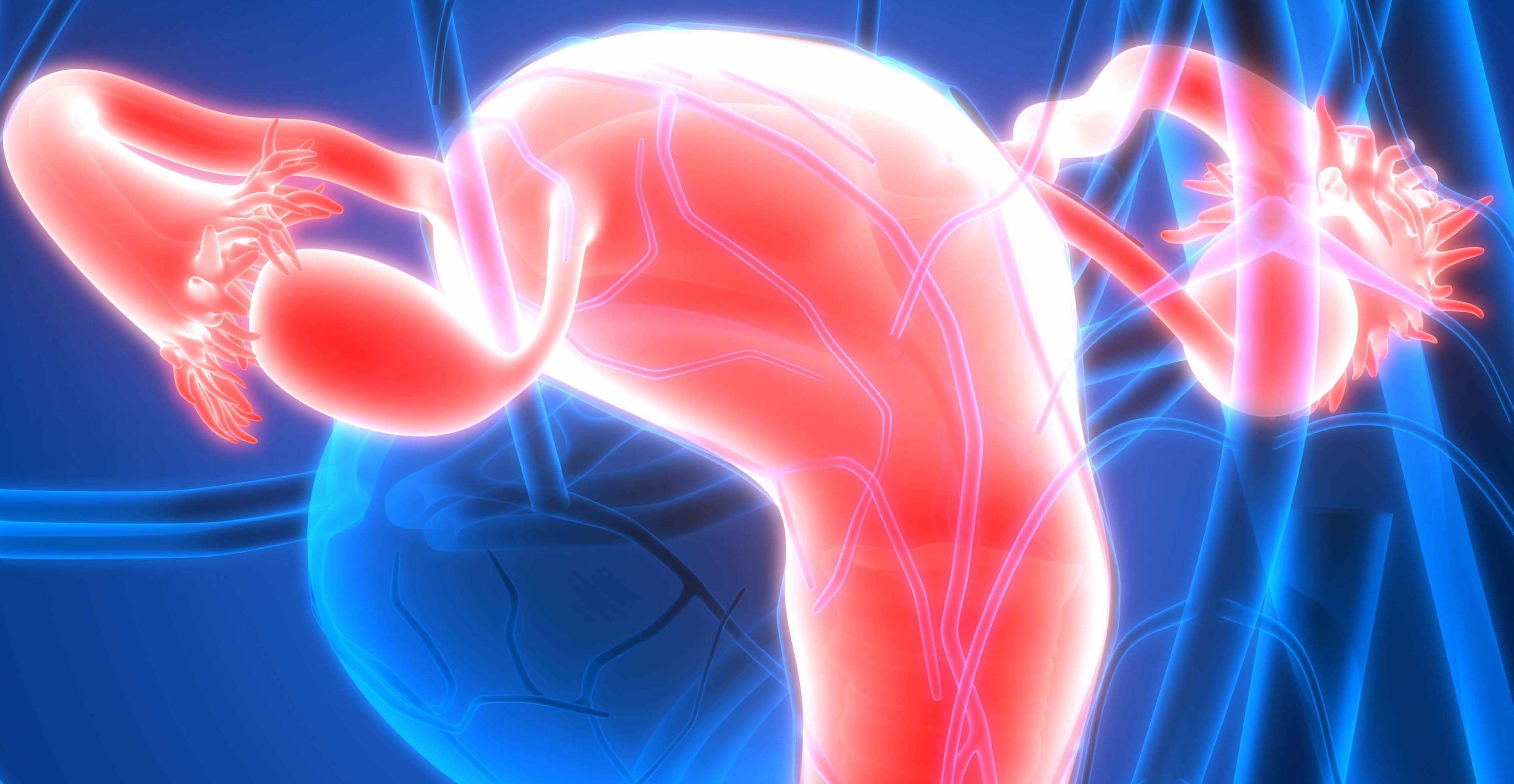CEE Therapy Confers Ovarian Cancer Risk in Postmenopausal Population
Findings may support reconsideration of guideline recommendations concerning the use of estrogen alone in postmenopausal individuals.
“These findings inform decisions regarding hormone therapy use and suggest reconsideration of guideline recommendations regarding [the use of] estrogen alone in [postmenopausal women],” according to Rowan T. Chlebowski, MD, PhD.

Postmenopausal individuals with prior hysterectomy had a significantly higher likelihood of developing ovarian cancer when treated with conjugated equine estrogen (CEE) alone, according to findings from 2 Women’s Health Initiative (WHI) trials presented at a 2024 American Society of Clinical Oncology Annual Meeting (ASCO) press briefing held before the meeting.1
Findings from another randomized study also found that in postmenopausal women with a uterus, CEE in combination with medroxyprogesterone acetate (MPA) was not associated with increased ovarian cancer incidence or mortality vs placebo—a finding that contrasts data from prior observational studies. This combination was also associated with a significantly reduced incidence of endometrial cancer.
“CEE and MPA were approved [as] hormone therapy in the United States [US] in 1943, and the question about endometrial and ovarian cancer has since remained unsettled after nearly 50 years of follow-up,” Rowan T. Chlebowski, MD, PhD, said during the press briefing.
Chlebowski is an investigator at The Lundquist Institute, as well as chief of the Division of Medical Oncology and Hematology at the Harbor-University of California, Los Angeles (UCLA) Medical Center and a professor of medicine at the David Geffen School of Medicine at UCLA.
In 2023, endometrial and ovarian cancer accounted for 13,030 and 13,270 deaths, respectively, in the United States.2 Observational studies of patients with endometrial and ovarian cancer have demonstrated generally consistent findings about the efficacy of treatment with estrogen alone and mixed findings regarding that of estrogen plus progestin.1
To contextualize these points of disparity between previously reported results, investigators evaluated the long-term influence of estrogen plus progestin and estrogen alone on endometrial and ovarian cancer events in postmenopausal women reported in randomized clinical trials conducted by the WHI.
This analysis included data from 2 randomized, placebo-controlled, double-blind WHI clinical trials that were conducted at 40 clinical centers in the US and enrolled patients from 1993 to 1998. The first trial enrolled 10,739 postmenopausal women who had undergone a prior hysterectomy, and they received either CEE at 0.625 mg per day or placebo. The second trial enrolled 16,608 postmenopausal women with an intact uterus who received either CEE at 0.625 mg per day plus MPA at 2.5 mg per day or placebo. Patients were eligible for inclusion in either study if they were 50 to 79 years of age and had no history of breast cancer, with protocol-mandated annual mammogram findings that were not suggestive of breast cancer and endometrial biopsies that were not suggestive of endometrial cancer.
“We only did a study with endometrial cancer in the women who got CEE plus MPA because we had previously known about the increased risk of endometrial cancer in women getting estrogen alone,” Chlebowski noted.
Ovarian cancers and endometrial cancers were verified by central medical records and pathology report review, and these cancers served as specified secondary outcomes for the studies. Deaths were verified by central death certificate and medical record review that was enhanced by 14 serial National Death Index queries, which capture 98% of deaths in the US.
In the CEE-alone trial, ovarian cancer developed in 35 patients who received CEE alone (annualized rate, 0.041%) vs 17 of those who received placebo (annualized rate, 0.020%; HR, 2.04; 95% CI, 1.14-3.65; P = .014). In these respective populations, ovarian cancer mortality occurred in 25 (annualized rate, 0.024%) and 9 (annualized rate, 0.008) patients (HR, 2.79; 95% CI, 1.30-5.99; P = .006), and death from all causes after ovarian cancer occurred in 30 (annualized rate, 0.035%) and 12 (annualized rate, 0.014) patients (HR, 2.47; 95% CI, 1.26-4.84; P = .006).
“This is the first randomized clinical trial with evidence to indicate that ovarian cancer mortality is increased by [use of] estrogen alone,” Chlebowski emphasized.
In the CEE-plus-MPA trial, ovarian cancer developed in 75 patients who received CEE plus MPA (annualized rate, 0.051%) vs 63 of those who received placebo (annualized rate, 0.045%; HR, 1.14; 95% CI, 0.82-1.59; P = .44). In these respective populations, ovarian cancer mortality occurred in 65 (annualized rate, 0.037%) and 52 (annualized rate, 0.031%) patients (HR, 1.21; 95% CI, 0.84-1.74; P = .31). Death from all causes after ovarian cancer occurred in 68 (annualized rate, 0.047%) and 48 (annualized rate, 0.035%) patients (HR, 1.37; 95% CI, 0.95-1.98; P = .09).
Endometrial cancer developed in 106 patients (annualized rate, 0.073%) who received CEE plus MPA vs 140 of those who received placebo (annualized rate, 0.10%; HR, 0.72; 95% CI, 0.56-0.92; P = .010). In these respective populations, endometrial cancer mortality occurred in 13 (annualized rate, 0.007%) and 21 (annualized rate, 0.013%) patients (HR, 0.58; 95% CI, 0.29-1.16; P = .12), and death from all causes after endometrial cancer occurred in 51 (annualized rate, 0.035%) and 72 (annualized rate, 0.052%) patients (HR, 0.68; 95% CI, 0.47-1.97; P = .034).
“These findings inform decisions regarding hormone therapy use and suggest reconsideration of guideline recommendations regarding [the use of] estrogen alone in [postmenopausal women],” Chlebowski concluded.
References
- Chlebowski RT, Aragaki AK, Pan K, et al. Menopausal hormone therapy and endometrial and ovarian cancer outcomes: long-term follow-up of the Women’s Health Initiative randomized trials. J Clin Oncol. 2024;42(suppl 16):10506. doi:10.1200/JCO.2024.42.16_suppl.10506
- Siegel RL, Miller KD, Wagle NS, Jemal A. Cancer statistics, 2023. CA Cancer J Clin. 2023;73(1):17-48. doi:10.3322/caac.21763
Belzutifan Improves PFS Across Subgroups for Advanced ccRCC
July 12th 2024“In LITESPARK-005, PFS and response rates favored belzutifan vs everolimus across [several patient subgroups, including] IMDC risk, number of prior lines [of therapy], and number of prior VEGF TKIs, specifically,” said Laurence Albiges, MD, PhD.